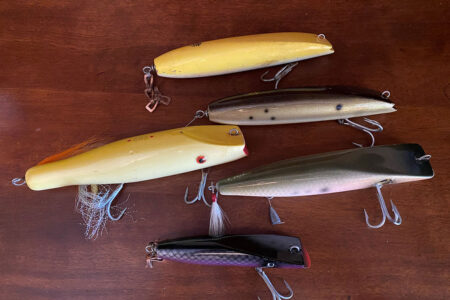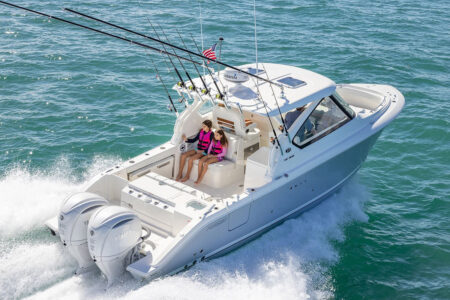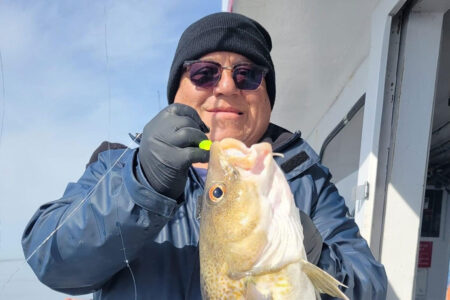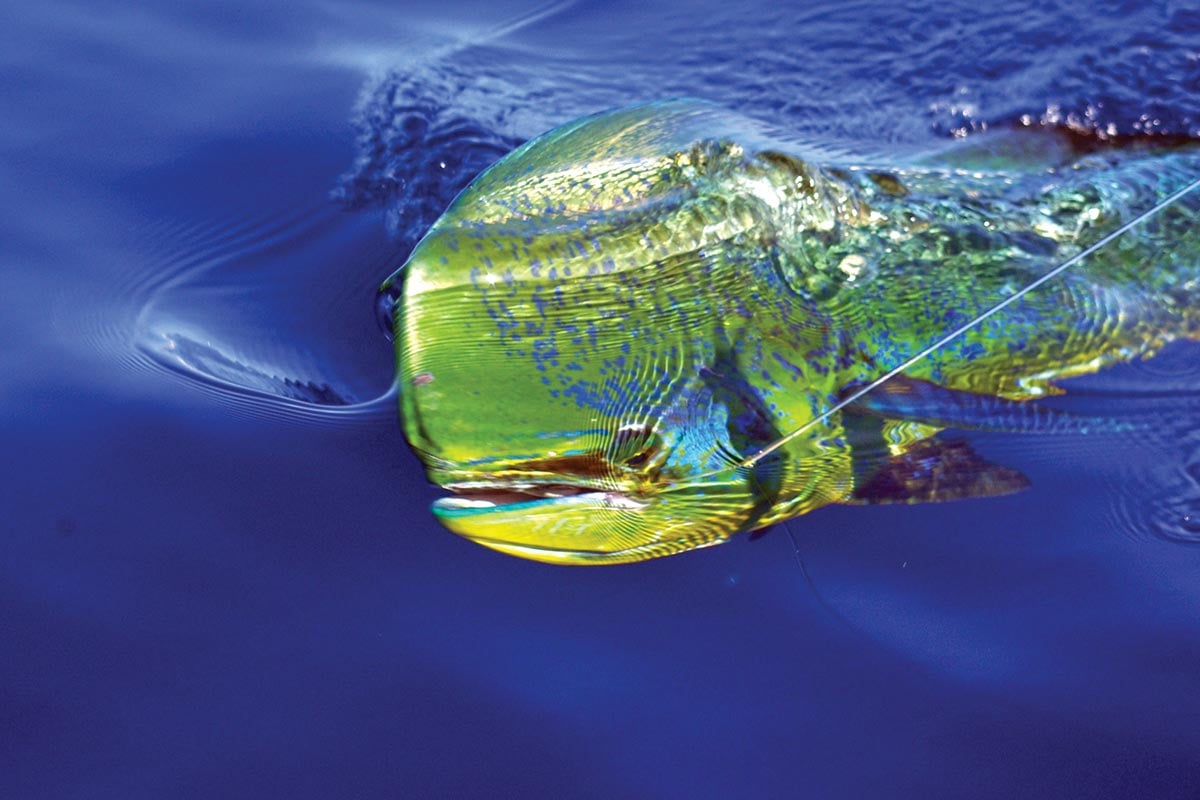
Work those hi-fliers and bell buoys casting light tackle to mahi of 2 to 20 pounds.
Electric green-blue waters were vibrating with life, salten scents permeated the air while a light east breeze whipped up the ocean surface to a slight ripple. Joined by Jerry Malanga and Alex Kondas, I stood on the bow during a sweltering mid-August afternoon, flinging a Pop Fleye out to a hi-flier pot buoy off Axel Carlson Reef.
As the fly sank, striking fluorescent green flashes fluttered underneath the pot buoy. In an instant, a 5-pound chicken class mahi streaked off the pots to whack the fly and come tight. Immediately, Malanga and Kondas tossed Kettle Creek paddletails and were promptly hooked up.
And just like that, we were dialed into the dolphin bite big time, a mere 3 miles off the Jersey Coast.
Pick Your Pots
July through September, pick your spots; nearshore, midshore and offshore, mahi making their move anywhere and everywhere from right off the shoreline out to the canyons when water temps hit those magic mid to high 70 degrees and into the low 80s. In 2018, we saw a pretty solid run in close with the whole gamut of size classes, from peanuts of a pound or so, up to real bulls reaching 40 pounds, with all sizes in between, averaging in the 5- to 15-pound class.
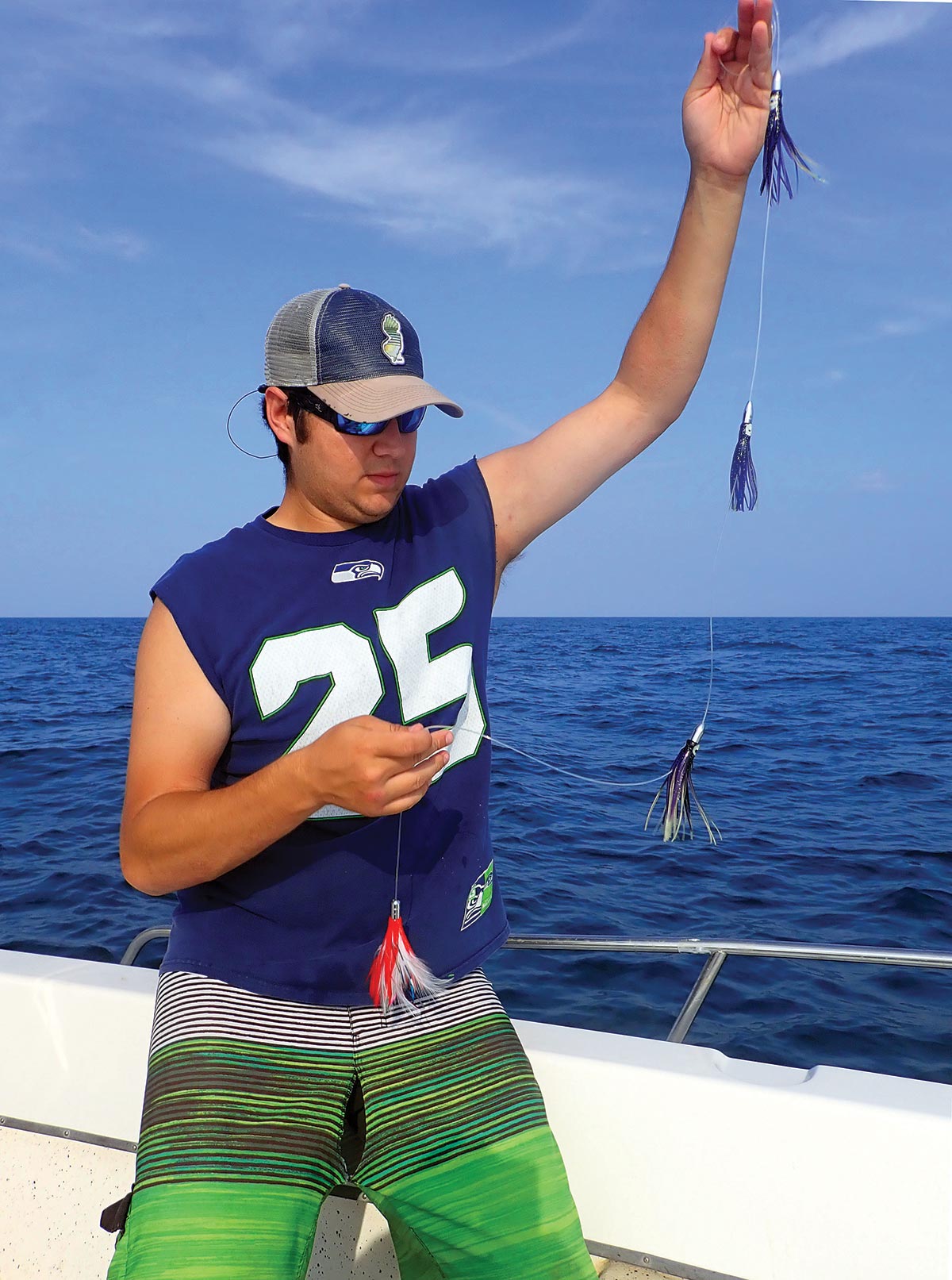
Hi-fliers that mark lobster pots are mahi magnets. These markers act as fish attracting devices or FADs, enticing dolphin to feed upon the growth and baitfish that congregate around them as the entire food chain revolves around that pot line. Minefields of pot lines can litter an open oasis and while one pot may not hold any fish, the next could contain the mother lode. Older pot lines will harbor more life as the food chain has had plenty of time to proliferate.
One of the most exciting ways to pick dolphin off the pots is via bucktails and soft baits. Relatively small, light Magictail, Andrus or Spro bucktails of a 1/2 to 2 ounces will work best to pull mahi off the structure as they can be jigged with maximum life-like effectiveness. White, white/chartreuse, and white/pink color patterns always seem to attract mahi. Without a doubt, tipping the bucktail hook with some flavor intensifies the attraction.
Many offerings can be lanced on the hook, including fluke bellies, live killies, squid tentacles or strips, and any kind of strip bait like false albacore, bonito, bluefish or mackerel, or you can opt for artificials such as a Gulp 5-inch jerk shad or 4-inch swimming mullet, or 5-3/4-inch Fin-S Fish in albino shad or rainbow trout. Try dipping the soft baits into FinEssence oil beforehand so the scent soaks into the bait.
Structured Focus
When working a pot line or marker buoy, take the boat out of gear upcurrent of the target about a hundred yards, staying a good 40 feet or so away so as not to spook any fish. Make your casts past the target, allowing the bucktail to sink for a good three count. Proceed to jig the bucktail or soft bait in short, jerky strokes back to the boat. Present the bait naturally in the current, as if you are drifting past the target and are simply pulling the lure through the water, engage the engines and redo the drift again. If you aren’t getting any hits near the surface, allow the bucktail to sink a good 30 feet or so, then work the bucktail back up the water column, pulling the deep rooted dolphin to come up.
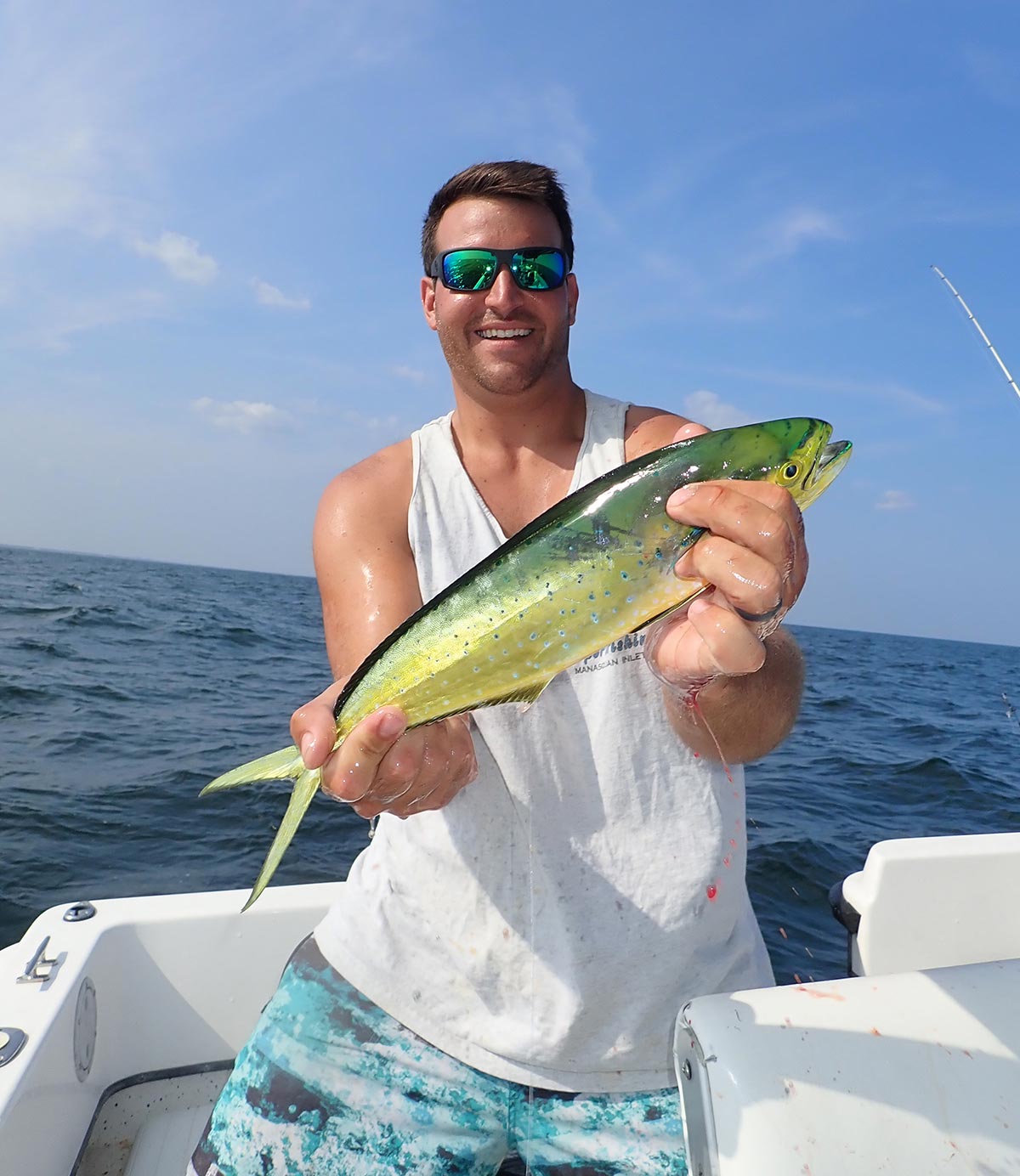
My personal light bucktailing set up includes a 7-foot GLoomis IMX PRO 843S rod rated for 15- to 50-pound, Shimano Stradic 5000 reel spooled with 30-pound Power Pro braid, then a 5-foot section of 25-pound Seaguar fluorocarbon leader.
Some pot buoys hold fish while others are blank. A fine way to prospect which buoys are housing mahi is to troll the area, stitching between pots back and forth in a forward moving line to sweep by each pot. Hot trolled offerings include Williamson Flash Feathers and Dorado Casters, Chatter Lures spreader bars, and Clark Spoons all in bright colors like cucumber/orange/green/yellow, though always have some blue/white and black/purple on hand. Drag the spread at 5 to 7 knots as close as you can to the pot, leaving enough room so as not to hook the line of the hi-flier.
As you’re trolling, station an angler on the bow to prospect cast the pot before the trolled baits get there. This way he can get the local mahi excited to strike when the trolled baits come in the following 30 seconds. Light tackle trolling gear in my spread includes a Shimano Talica 20 reel matched to a Shimano 6-1/2-foot Terramar Northeast Inshore Casting rod rated 20- to 50-pound.
Turn ‘em on!
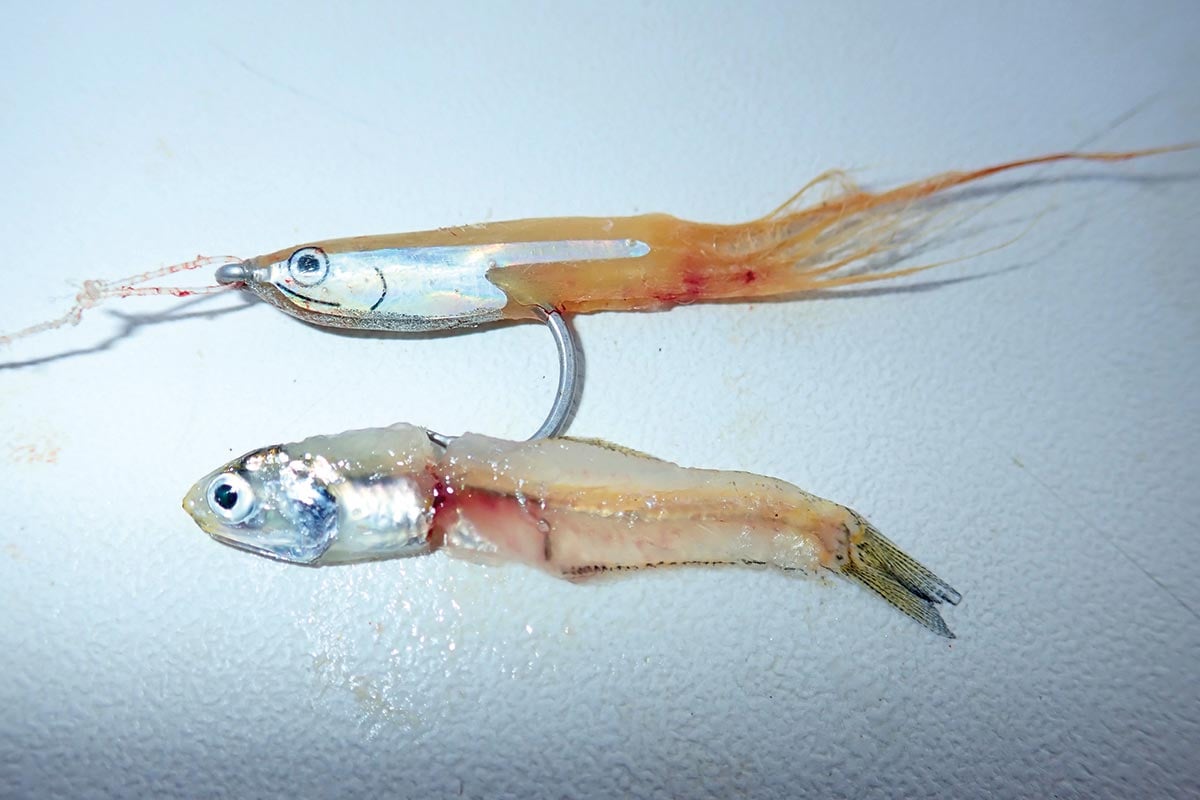
Dolphin are suckers for activity; when they see one feed, the rest get into frenzy mode. When hooked up with a dolphin, put the hooked-up rod in the gunwale holder. Toss out a bucktail tipped with a long octopus or squid tentacle out off the side of the spread, or down where the mahi is flashing underwater and reel in at a moderate pace. You will draw in any remaining mahi in the area for an immediate strike.
Of course, fickleness and caution can set in on pot mahi, meaning you really need to convince them to strike. Live bait accomplishes that end. On any trip out, always have a bucket of live killies or peanut bunker ready and properly aerated. Before you even get a bait in the water, grab a handful of live killies or peanuts and throw them out toward the pot. The immediate activity will spark wary dolphin to feed.
For freeline live bait rig, tie on a 50-pound Spro barrel swivel, a 30-inch section of 25-pound Seaguar fluorocabon leader and a size 3/0 Gamakatsu octopus hook. Send out a live killie or peanut hooking the bait through the lips. Pitch it out to the buoy. If you need to get deeper, slide on a half-ounce egg sinker above the barrel swivel to get the bait down further on the pot line. Those live baits should always be on board and be thrown out in the mix and used to spice up the bite, whether you are trolling, bucktailing or live baiting.
After an incredible invasion of tropical speedsters and mahi last summer, pot hopping for mahi could be a daily game not only for offshore anglers, but small boaters hitting pots right off the beaches. Bring all the tools in your arsenal and be prepared to dance with some dolphin.
Enjoy the heatwave of summer mahi visiting us while we have it. It’s game on!
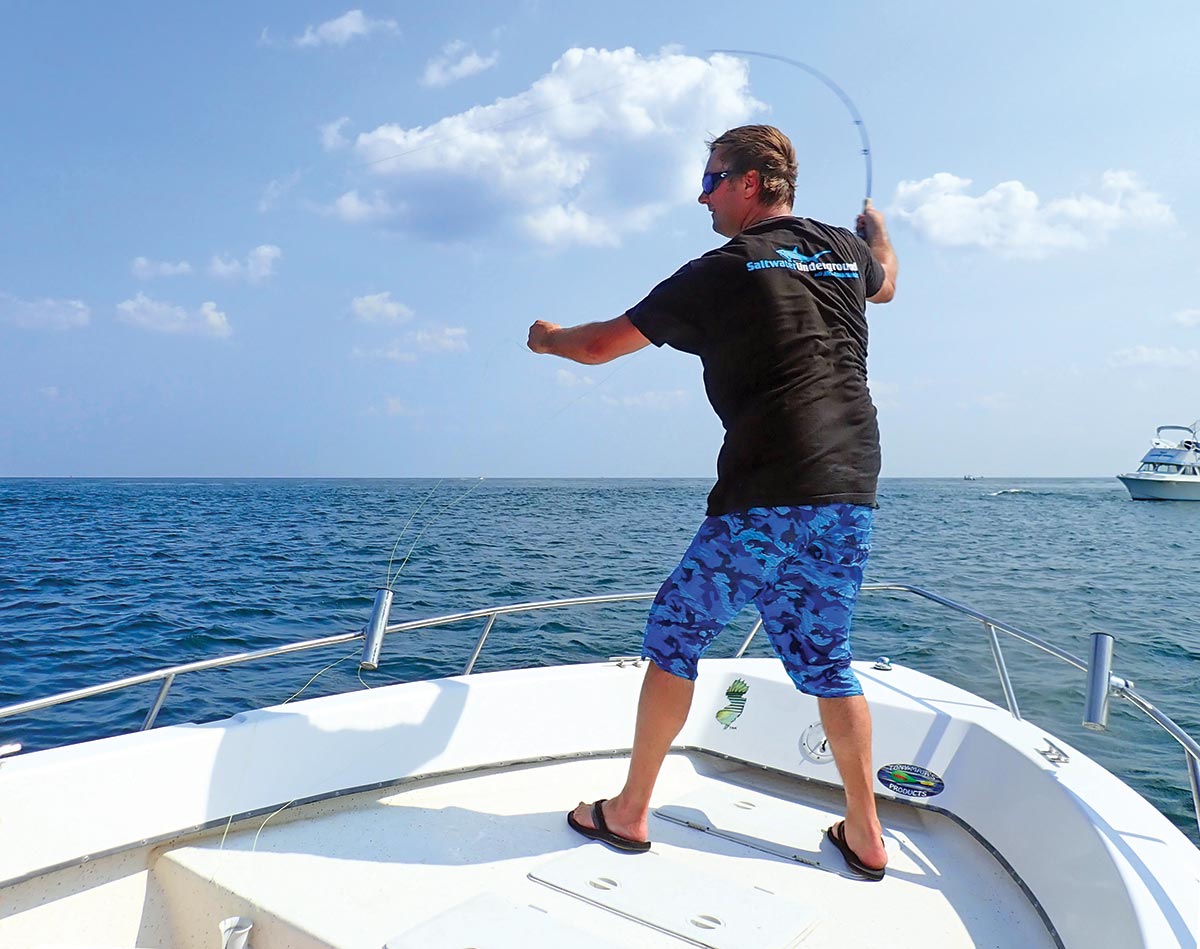
| DREAM BOAT MAHI |
|---|
|
The Fisherman’s Dream Boat Fishing Challenge is a season-long, multi-species, region-wide fishing contest in which Fisherman subscribers compete to win the most amazing prizes. Among those prizes is the “Fish of the Month” designation in which the subscriber with the heaviest fish of the month for a given species will win a Fish of the Month Prize. For the month of August, mahi will be our target species for The Fisherman’s subscribers with the angler hitting the largest mahi from August 1 to August 31 winning a pair of sunglasses from Unsinkable Polarized Sunglasses and a fillet knife from Dexter Russell. To follow along with our Dream Boat leaderboard this season, go to TheFisherman.com. |
